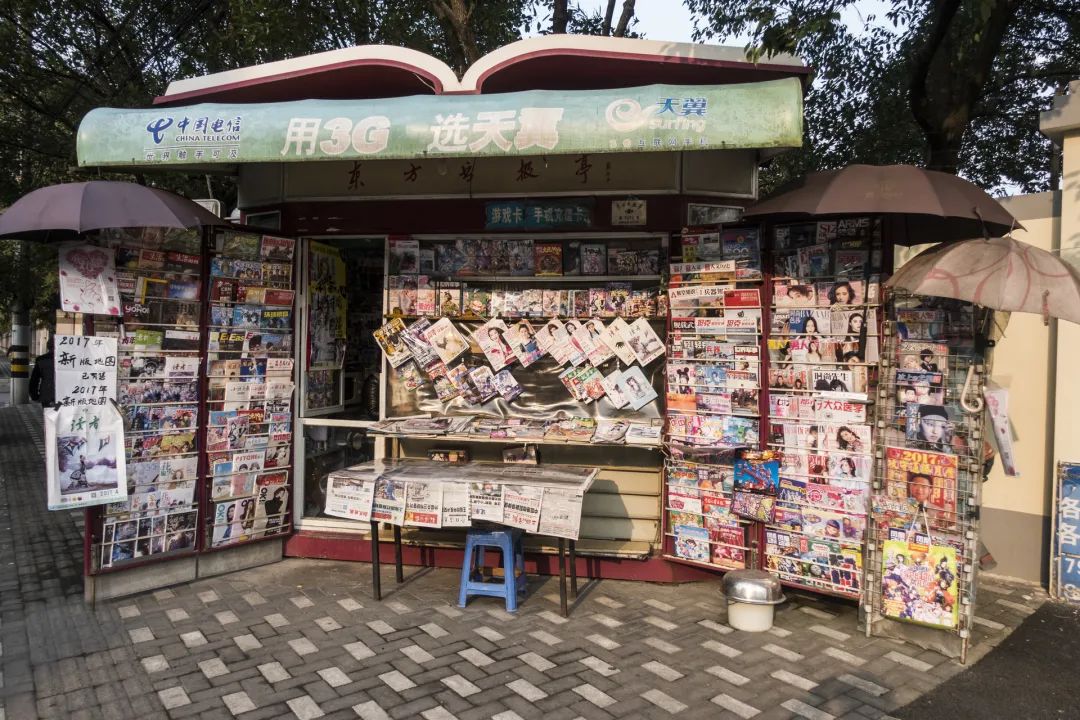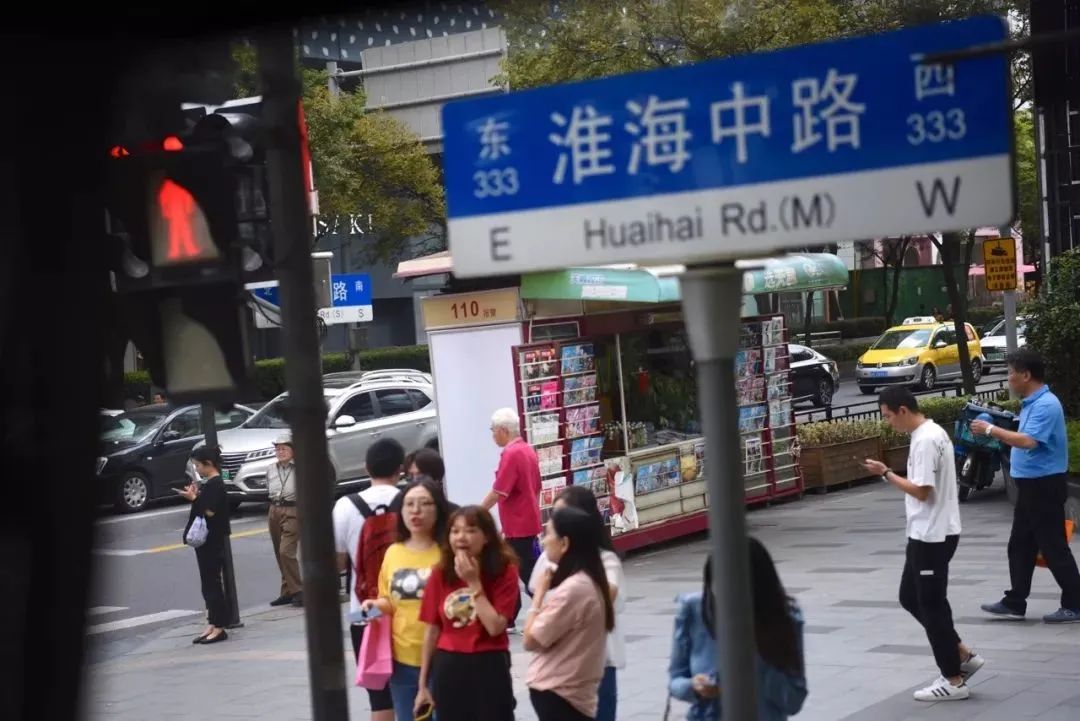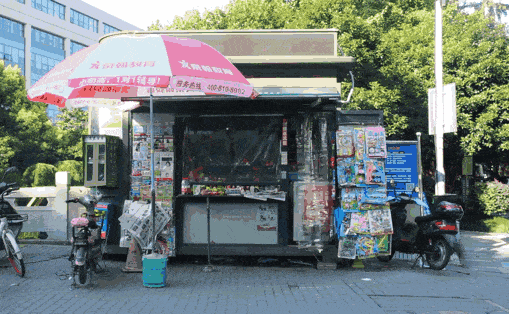Mobile map apps fail to locate #529 Wusong Road.

It’s a small newspaper stand, too small to be found on a variety of digital map apps. Affiliated with China Post Office’s Hongkou Branch, it is the last hidden newspaper stand in the city.

For young people, newspaper stands don’t mean much to them – since they can find anything on the phone nowadays.

But it means a lot to older Shanghainese and to those expats who have lived in Shanghai for decades.They still remember what the old streets looked like. Every few intersections you would find a similar newspaper stand. It’s hard to imagine that nowadays there is only one newspaper stand left in the entire city.

Similar phenomenon has been found in a lot of other big cities in China as well. Why is it happening?
There used to be about 3,000 Oriental Newspaper stands, which were all designed the same – with a glass pavilion and red frame. It was called the “name card” of Shanghai. They have made great contributions to Shanghai’s cultural and spiritual development.

In China, newspaper stands came into existence to create more employment opportunities. In the middle of the 1990s, due to social transformation and state-owned enterprise reform, a lot of workers from state-owned enterprises were laid off and lost their good benefits. To help them to find a job, street newspaper stands were created.

The cultural environment is not the only thing to blame for the disappearing newspaper stands -publishers, media, and bookstores in Shanghai have been hurt as well. The real killer is the giant wave of media transformation – the shift from offline to online digital media. Paper is no longer the heart of media.

In addition, hundreds and thousands of newspaper stands were demolished as cities were torn down and redeveloped – officials believing that newspaper stands took over the street and hurt the image of the city. Newspaper stands, great memories of one generation, are now gradually disappearing.
